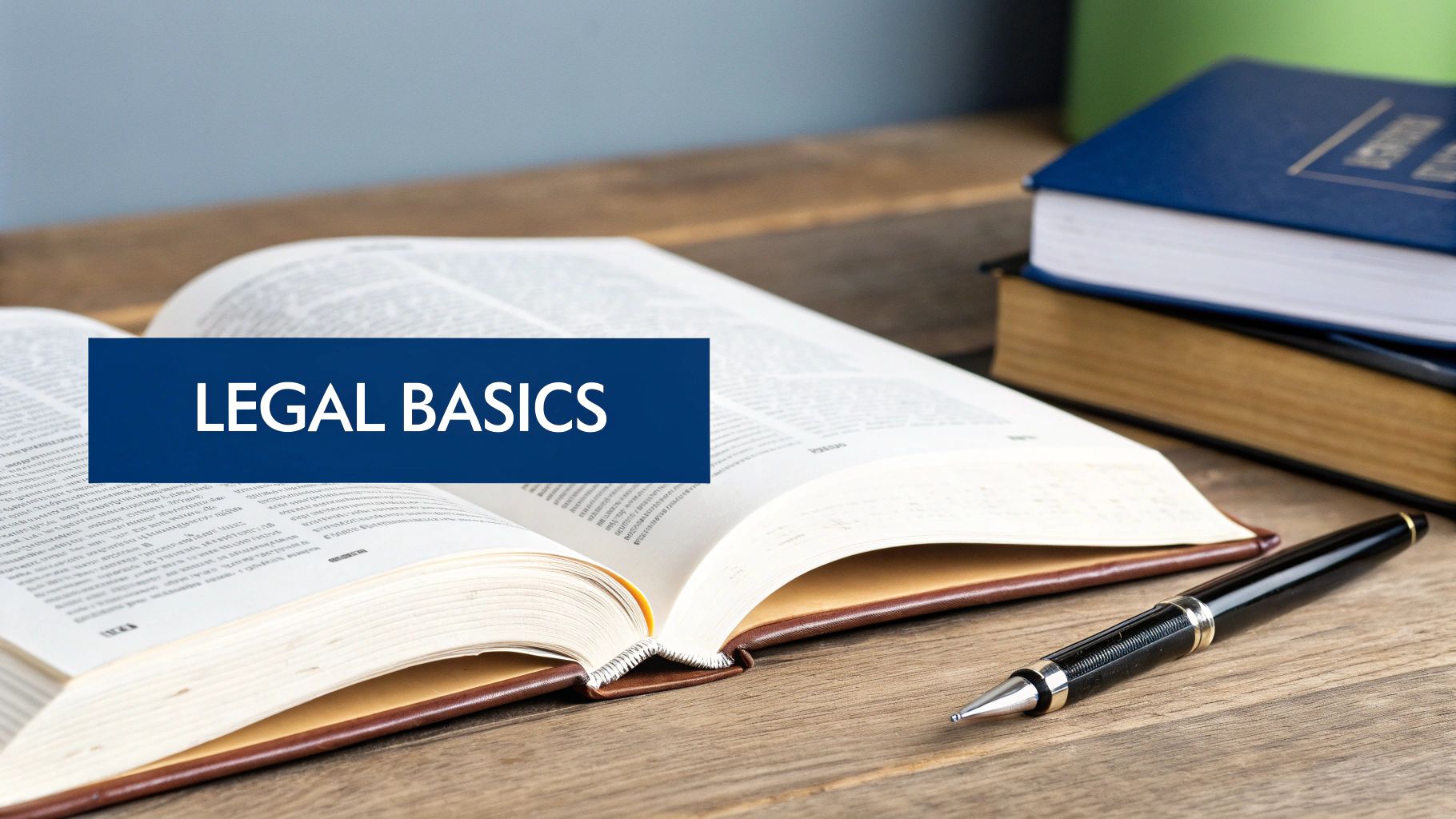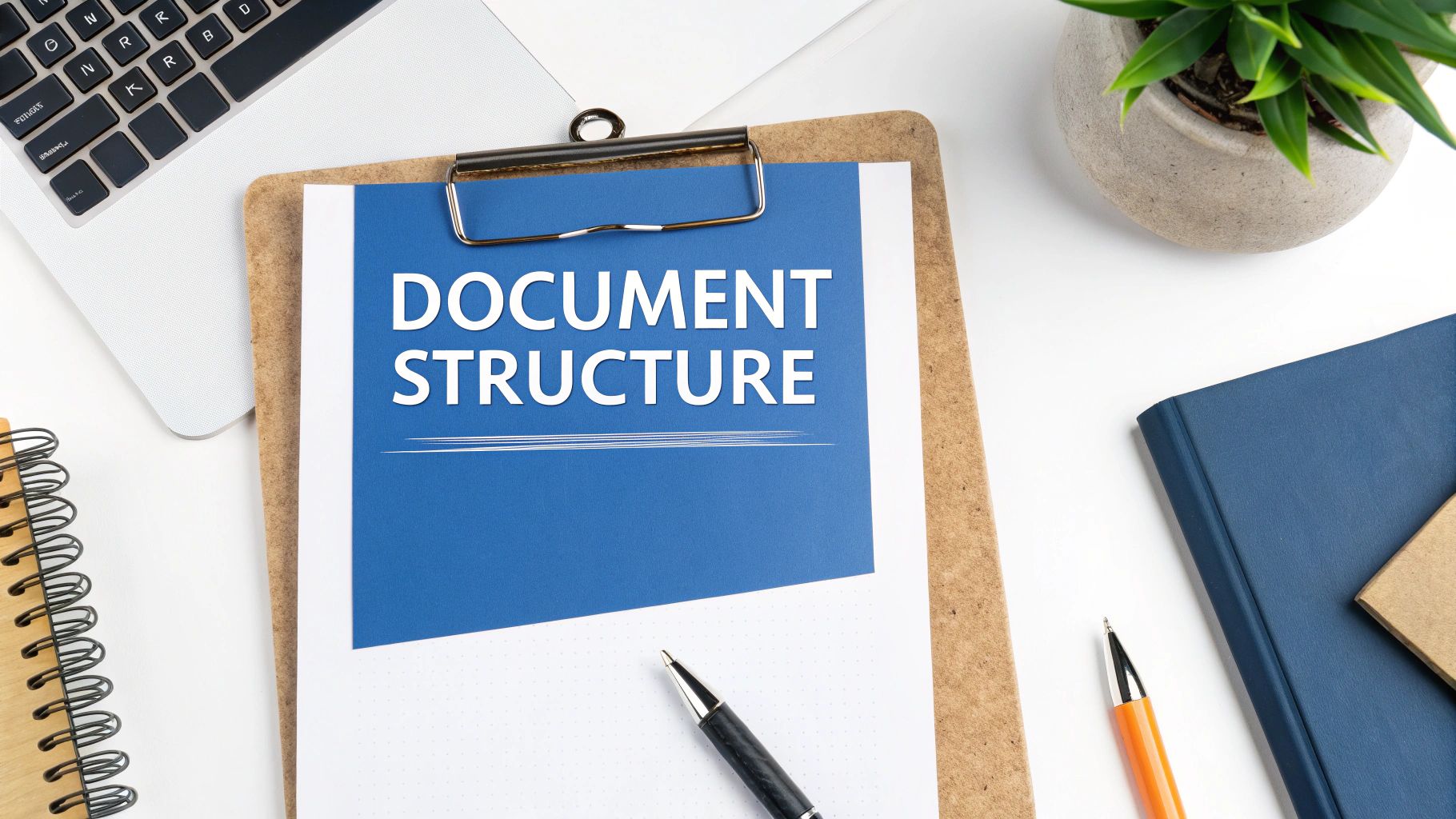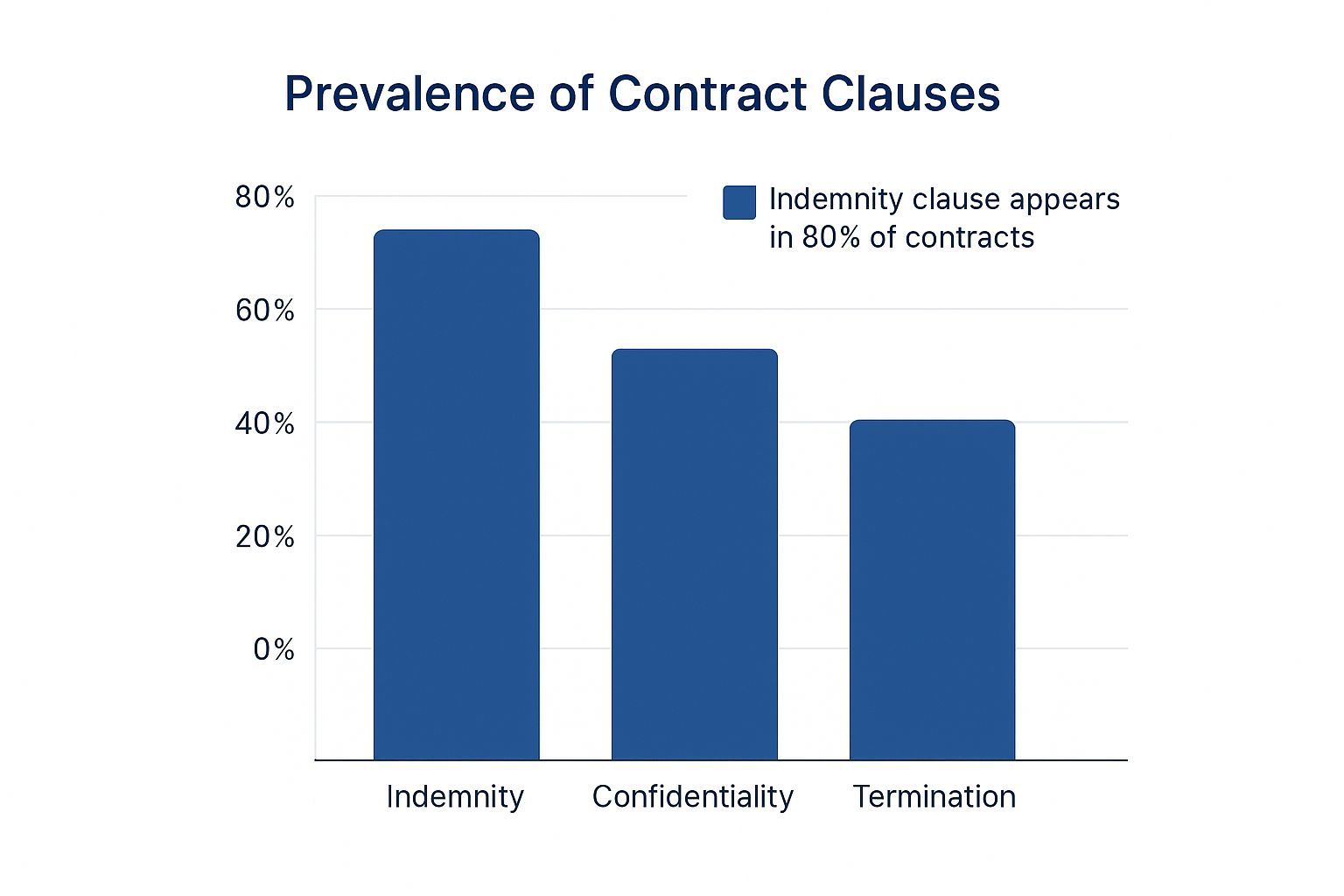How to Write Legal Documents: Expert Tips & Guidance
Breaking Down the Legal Writing Mindset

Crafting effective legal documents requires more than just assembling legal jargon; it demands a particular mindset. This mindset necessitates striking a balance between precision and clarity. Every word must contribute to the document's legal validity while remaining understandable to the intended reader. This balance is essential because ambiguity can lead to misinterpretations, potentially jeopardizing legal proceedings.
Understanding Your Audience
A crucial aspect of legal writing involves understanding your audience. Consider whether you are writing for a judge, a client, or another attorney. Each audience possesses different levels of legal expertise and varying expectations. A contract for a client should be written in plain language, while a legal memorandum for a judge may utilize more specialized terminology. Effectively addressing these different audiences requires adaptability and a deep understanding of legal writing principles.
Precision and Clarity: Two Sides of the Same Coin
Precision in legal writing relies on careful word choice and meticulous attention to detail. Vague terms like "reasonable" or "appropriate" can introduce ambiguity and potential disputes. Instead, aim for specific, measurable language that minimizes the risk of misinterpretation. However, this precision should not sacrifice clarity. Excessively complex sentences and jargon can obscure the meaning, even for legally trained readers.
This principle also extends to integrating new technologies into the writing process. The legal field is increasingly adopting digital tools. As of 2022, approximately 10% of law firms used interactive websites for legal document generation, with another 20% planning adoption. Furthermore, nearly three-quarters of lawyers anticipated using AI in drafting and review processes. This trend highlights how technology can support and improve legal writing. For more statistics, see: LexisNexis Legal Technology Statistics. Also, consider exploring tips on precision: How to Master Legal Writing Precision.
Maintaining Consistency and Accuracy
Finally, maintaining consistency and accuracy throughout a document, especially lengthy ones, is paramount. Conflicting clauses in a contract or inconsistent arguments in a brief can undermine credibility and create legal vulnerabilities. A systematic approach, careful proofreading, and using tools to ensure consistency are vital components of the legal writing mindset. This diligence ensures documents are clear, persuasive, and withstand scrutiny.
Crafting the Architecture of Effective Legal Documents

The structure of a legal document forms its backbone, providing the essential framework for communicating complex legal arguments clearly, concisely, and persuasively. This structure isn't simply about aesthetics; a well-structured document is significantly more likely to be both effective and enforceable. Just as a house requires a solid foundation and framework for stability, a legal document needs a logical structure to withstand scrutiny.
Key Structural Elements of Legal Documents
Several key structural elements contribute to a legal document's effectiveness:
- Clear Headings and Subheadings: These elements guide the reader, highlighting key information and breaking down complex topics into manageable sections. Like chapter titles in a book, headings and subheadings provide a roadmap of the document’s contents.
- Numbered Paragraphs and Clauses: Numbering provides a clear and precise method for referencing specific sections, essential for cross-referencing and ensuring all parties understand the points of discussion. Imagine trying to locate a specific sentence within a lengthy contract without numbered paragraphs – this system provides crucial organization.
- Consistent Formatting and Typography: Using a consistent font, spacing, and indentation creates a professional and readable document. This consistency enhances clarity and minimizes potential ambiguity. For example, using bold text for key terms emphasizes their importance.
Strategic Use of Visual Hierarchy
Visual hierarchy plays a critical role in document accessibility. Strategic formatting, such as bullet points, tables, and varied font sizes, improves readability and draws attention to vital information. This is particularly important for longer documents like contracts or legal memoranda, where maintaining reader engagement is crucial. A document that is easy to read is more likely to be understood and acted upon.
This emphasis on efficient organization is reflected in the growing adoption of legal automation tools like Clio Manage. Automating tasks has significantly reduced document drafting time. A study by Gavel found that their software reduced drafting time by up to 90%. Tasks like drafting divorce documents, previously taking hours, can now be completed in under an hour. Learn more about these time savings here: Gavel's Study on Legal Automation and Time Savings.
Tailoring Structure to Document Type
Different legal documents demand different structural approaches. A contract, for instance, requires precise clause organization for clarity and enforceability. A persuasive legal memorandum, however, needs a strategic narrative flow to present legal arguments effectively. Recognizing these distinctions is essential. Whether drafting a contract, a will, or a legal brief, understanding the appropriate structure is fundamental to effective legal writing.
Speaking the Language of Law Without Losing Clarity

Legal writing requires a delicate balance: maintaining precision while ensuring clarity. While specific legal terminology is crucial for accuracy, it can also create obstacles for those unfamiliar with it. This section explores how to create legal documents that are both legally sound and easily understood. Clarity is paramount in effective legal writing. For further guidance on technical writing, see this helpful resource: How to Write a Technical Document.
Defining Key Terms
A fundamental step towards clarity is defining key terms. For instance, if a contract mentions intellectual property, the document should explicitly define what this term encompasses within the specific context of the agreement. This proactive approach to definition helps prevent misunderstandings and potential disputes later on. Including a glossary or defining terms within the body of the document can significantly improve comprehension, especially for readers with less experience in legal terminology.
Eliminating Ambiguity
Ambiguity is a major impediment to clear legal writing. Vague phrasing can result in multiple interpretations, weakening the document's legal force. Therefore, aim for specific and measurable language. Instead of "prompt delivery," specify "delivery within three business days." This precision eliminates room for misinterpretation and reinforces the document's intended meaning.
Utilizing Cross-References Effectively
Cross-references can be valuable tools for clarity and conciseness in longer legal documents. They link related sections, enabling readers to quickly locate pertinent information. However, ineffective cross-references can create confusion. Implement a consistent system and ensure each reference is accurate and easy to follow. For example, “See Section 3.2 (Payment Terms)” provides better context than simply “See 3.2.” This small addition significantly enhances navigation and understanding.
Avoiding Archaic Language and Passive Voice
Archaic language and excessive passive voice can make legal documents appear unnecessarily complicated and outdated. While certain traditional phrasing may be unavoidable, prioritize contemporary language. Replace phrases like "hereinafter referred to as" with simpler alternatives like "called" or "known as." Similarly, minimizing passive voice makes sentences more direct and impactful. For more tips on legal writing, see this article on How to Master Legal Briefs. A clear and concise writing style ultimately enhances both readability and comprehension, ensuring the document effectively conveys its message.
Mastering Essential Legal Document Types
Different legal documents serve distinct purposes and require specific approaches. This section explores key considerations for drafting various legal document types, offering insights to enhance your document creation skills. From contracts to transactional documents, we’ll delve into why specific elements matter within the legal system. You might be interested in: Templates for Legal Documents.
Contracts: Building Enforceable Agreements
Contracts form the foundation of countless business and personal interactions. Successfully drafting a contract requires careful consideration of several factors. First, clarity is paramount. Ambiguity can lead to disputes, so precise language is essential. Define key terms explicitly, leaving no room for misinterpretation. For example, instead of stating "timely delivery," specify "delivery within five business days."
Second, anticipate potential problems. Include clauses addressing common issues like breach of contract, dispute resolution, and termination. These provisions outline the parties’ responsibilities in various scenarios, helping to minimize future conflicts.
Third, structure the contract logically. Use clear headings and numbered paragraphs to facilitate navigation. This organized approach helps both parties understand their obligations and quickly locate specific information.
Litigation Documents: Presenting Persuasive Arguments
Litigation documents, such as motions and briefs, aim to persuade a judge or jury. Effective litigation documents require a clear and concise presentation of facts and legal arguments. Begin with a strong introduction that summarizes your position.
Then, develop your arguments logically, supporting each point with evidence and legal precedent. A strategic narrative flow helps keep the reader engaged and reinforces your position. For a comprehensive understanding of effective legal writing, explore resources on legal writing style guide.
Transactional Documents: Balancing Technicality and Usability
Transactional documents, such as wills and trusts, often require a balance between technical legal requirements and practical usability. While adherence to legal formalities is essential for validity, the document should also be understandable to the individuals involved. Using plain language whenever possible ensures that the client clearly comprehends their rights and obligations.
To understand the key differences between common legal document types, let's examine the following comparison:
Comparison of Common Legal Document Types
| Document Type | Primary Purpose | Essential Components | Special Formatting Requirements | Typical Audience |
|---|---|---|---|---|
| Contract | Establish a legally binding agreement between parties | Offer, acceptance, consideration, clear terms and conditions | Signatures, possibly notarization | Parties to the agreement |
| Will | Specify distribution of assets after death | Testator's signature, witnesses' signatures, specific bequests | Often requires notarization and specific state requirements | Probate court, beneficiaries |
| Trust | Manage assets for a beneficiary | Grantor, trustee, beneficiary, trust assets, terms of management | May require specific state registration | Trustee, beneficiary, legal professionals |
| Motion (Litigation) | Request a specific action from the court | Legal basis for the request, supporting evidence, specific relief sought | Court-specific formatting rules, citation format | Judge, opposing counsel |
| Brief (Litigation) | Present legal arguments to the court | Summary of facts, legal arguments, supporting precedent, conclusion | Court-specific formatting rules, citation format | Judge, opposing counsel |
This table highlights the diverse nature of legal documents, emphasizing the importance of tailoring your approach to each specific type. From the formal requirements of a will to the persuasive arguments in a brief, understanding these differences is crucial for effective legal writing.
The following infographic visualizes the prevalence of certain key clauses in contracts:

As the infographic illustrates, indemnity clauses appear in 80% of contracts, while confidentiality and termination clauses are present in 65% and 50% respectively. This data underscores the importance of incorporating these crucial elements for comprehensive contract drafting.
Achieving Your Document's Purpose
Ultimately, effective legal writing is about achieving the document's intended purpose. Whether establishing a contractual agreement, advocating for a client in court, or securing a client's future through estate planning, understanding the nuances of each document type is key. By mastering these key principles, you can create legal documents that are not only legally sound but also effectively serve their intended purpose.
Leveraging Technology In Legal Document Creation
The legal profession, known for its meticulous processes and reliance on precedent, is increasingly adopting technology to streamline document creation. This shift offers significant advantages, but also presents new challenges. Legal professionals must carefully consider how to best use these tools while maintaining the ethical standards of their practice. For more information, see this article on Legal Document Automation.
Automation and AI In Legal Writing
Automation tools are now essential for many legal tasks, including creating documents. Powered by Artificial Intelligence (AI), these tools can automate repetitive tasks like generating standard contract clauses, formatting documents, and performing basic legal research. This allows legal professionals to dedicate more time to complex legal matters requiring human analysis and judgment.
For example, AI-powered document assembly systems enable lawyers to quickly and accurately produce tailored legal documents by drawing relevant data from databases and templates. This increases efficiency and reduces the risk of human error, leading to more accurate documents. AI can also review documents, flagging potential inconsistencies or omissions and ultimately improving the overall quality.
Collaborative Platforms and Knowledge Management
Beyond automation, technology also enhances collaboration and knowledge sharing within legal teams. Secure cloud-based platforms like Microsoft SharePoint or Google Workspace allow multiple team members to work on the same document simultaneously, track revisions, and offer real-time feedback. This contributes to faster document completion and incorporates input from all involved parties.
Knowledge management systems further centralize and organize a legal team's collective knowledge, encompassing legal research, precedents, and document templates. This ensures consistency in drafting and reduces time spent searching for information. Access to readily available resources enables legal professionals to work more efficiently and effectively. The legal AI market for document drafting and review is experiencing significant growth, projected to reach USD 549.5 million by 2030, up from USD 206.4 million in 2024. This reflects the increasing demand for automated legal document processing. For detailed data, see: Legal AI Market Statistics.
Security and Ethical Considerations
While technology offers numerous benefits, legal professionals must address the associated security and ethical implications. When using AI-powered tools or cloud-based platforms, protecting client data confidentiality and security is paramount. Choosing reputable platforms with strong data encryption that comply with relevant data privacy regulations is essential.
Finally, while AI can assist in numerous aspects of document creation, maintaining attorney oversight and judgment remains crucial. AI tools should be seen as valuable aids, not replacements, for legal expertise. This ensures that technology strengthens, not compromises, the ethical and professional standards of legal practice.
Building Foolproof Review Systems
Even the most carefully drafted legal documents can encounter significant issues if they aren't thoroughly reviewed. This section explores the systematic methods that leading legal professionals use to identify and correct critical errors before they become serious problems. This proactive approach safeguards both the client and the legal professional.
Establishing Comprehensive Review Checklists
Creating a detailed review checklist adapted for different document types is essential for consistent and effective reviews. These checklists serve as guides, leading the reviewer through crucial elements and ensuring nothing is missed. For instance, a contract review checklist might include verifying key clauses related to payment terms, dispute resolution, and termination rights. Learn more in our article about How to master your documentation review checklist. Checklists for litigation documents, on the other hand, should cover verifying citations, ensuring factual accuracy, and confirming adherence to court rules.
Implementing Effective Version Control
Version control systems are essential tools for managing multiple revisions and maintaining clarity throughout the review process. These systems enable reviewers to track changes, compare versions, and revert to earlier drafts if necessary. This is especially valuable during collaborative reviews where several people contribute to a document. Think of it like tracking changes in a shared online document: each edit is saved, preserving a clear history of revisions and preventing accidental overwrites.
Coordinating Collaborative Reviews
Collaborative reviews harness the expertise of multiple team members, improving the chances of catching different kinds of errors. Clearly defined roles and communication protocols are essential for effective collaborative review. For example, one team member might focus on legal accuracy while another focuses on clarity and using plain language. This combined approach provides both specialized expertise and a broader perspective, resulting in a more robust final document.
Targeting Common Errors and Triaging Review Intensity
Minor errors such as typos or inconsistent numbering often slip through initial drafts. Targeted review strategies, like proofreading for formatting or verifying cross-references, can help catch these issues. Importantly, not all documents require the same level of scrutiny. Practical methods for triaging review intensity based on risk assessment—for instance, a complex commercial contract might require more extensive review than a standard client letter—ensure efficient use of resources.
Documenting the Review Process
Documenting the review process itself is critical for protecting both the legal professional and the client. Keep clear records of who reviewed which sections, what changes were suggested and implemented, and the timing of each review stage. This documentation creates a valuable audit trail, demonstrating due diligence and offering protection should disputes arise later.
To further aid in the legal document review process, consider the following checklist:
A comprehensive checklist of elements to verify during the legal document review process, organized by review stage and priority level.
| Review Element | Critical Issues to Check | Common Errors | Verification Method |
|---|---|---|---|
| Contract Review: Key Clauses | Presence of essential clauses (payment terms, dispute resolution, termination rights) | Missing or incomplete clauses | Clause-by-clause comparison with standard templates/checklists |
| Litigation Documents: Citations | Accuracy and format of legal citations | Incorrect citations, outdated case law | Verification using legal research databases (e.g., LexisNexis, Westlaw) |
| Document Formatting | Consistent font, numbering, headings, and spacing | Inconsistent formatting, typos | Proofreading and style guide adherence |
| Cross-References | Accuracy and completeness of internal and external references | Broken links, incorrect references | Manual verification of all references |
This checklist offers a structured approach to legal document review, focusing on critical elements and common errors. Using this checklist helps maintain accuracy and quality in legal documents.
Whisperit empowers legal professionals to enhance their document creation and review process through secure and efficient AI-powered dictation and text editing. Improve your workflow, reduce paperwork time, and improve accuracy with Whisperit. Visit Whisperit today to learn more.